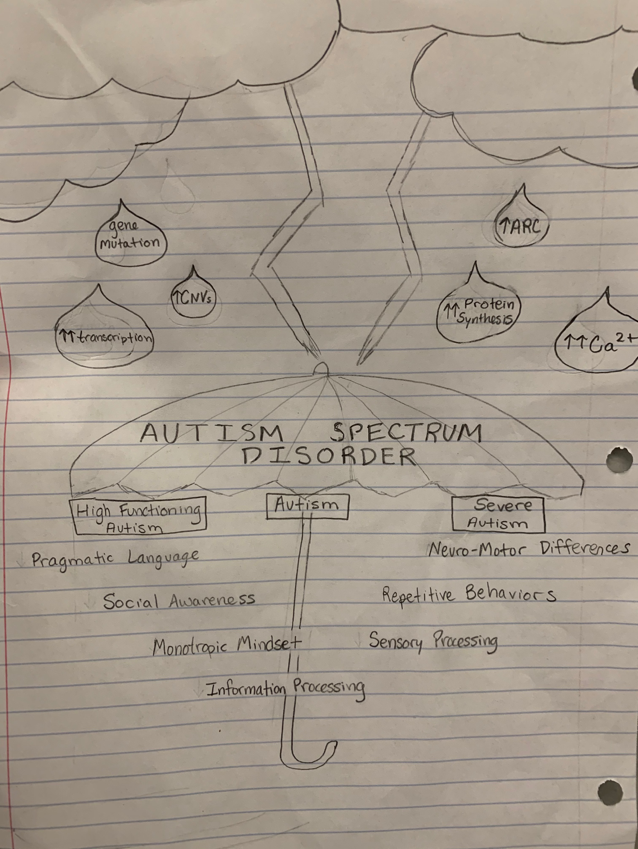Rain Man, a breakthrough Hollywood film from the late eighties, brought us a representation of a man with autism. The film enabled us to better understand how one specific individual with autism perceives the world. We as a society can do better at giving individuals with autism the necessary resources to allow for them to have the comfort and safety in their everyday lives.

While this film brought autism to the public attention, we must be careful at what we take away from this film. We must not walk away from this film with the impression that all individuals with autism are savants, as Oscar winning actor Dustin Hoffman displayed in his portrayal of Raymond Babbitt. We must realize that autism falls under the umbrella term, autism spectrum disorder (ASD) and that individuals with ASD can express many different symptoms and behaviors.
The symptoms and behaviors that correspond with ASD affect each individual differently on how they understand and react to the world around them. No two people are affected in the exact same way.
“If you’ve seen ONE child with autism, you’ve seen ONE child with autism.”
There are many questions to why this statement is true. However, research has been done to help explain the complexity of the vast array of symptoms and behaviors.
GENETIC FACTORS
There are a number of factors that can influence the development of ASD including genetics. Genetic mutations can be visible in many different proteins and genes such as SHANK, UBE3A, MECP2, and TSC1-TSC2. Increased risk of these mutations may also be due to environmental reasons, complications during pregnancy, or older aged parents.
SHANK
Genes encoding for the SHANK protein are seen in individuals with ASD. These proteins are known as scaffolding proteins, which function in synapse morphology. When this protein is mutated, which has been performed in animal studies, various symptoms and behaviors that fall under ASD are observed. Motor behavior and social interaction is most noticeably affected.
UBE3A
UBE3A is a gene that is essential for neuronal growth and codes for an enzyme that breaks down other proteins within the cell. In ASD, this gene has been noticed to be mutated or deleted. Without this gene, an important protein known as ARC continues to be made. The ARC protein weakens the synapse by removing AMPA receptors. AMPA receptors are integral to plasticity and synaptic transmission. A weakened synapse leads to ASD related symptoms.
MECP2
MECP2 acts a transcription repressor and is involved in ensuring that DNA is folded into chromatin properly. When this gene is mutated, DNA is not folded properly causing an imbalance between inhibition and excitation. Too much or too little MECP2 protein leads to ASD symptoms.
TSC1-TSC2
TSC1-TSC2 are proteins that work closely with growth factors such as brain derived neurotropic factor (BDNF). When these proteins are activated a, GTPase activating protein (GAP) is reduced leading to a cascade of proteins being activated. Rheb is activated, followed by mTOR. When TSC1-TSC2 proteins are mutated, the activation cascade is disrupted leading to abnormal protein synthesis and ASD symptoms.
These genetic factors are just some of the reasons for the vast array of symptoms and behaviors associated with ASD. The effects of all disorders under the umbrella term are unpredictable and wide ranging. On top of that, many of it is not completely understood.
The umbrella has continued to expand. As more research continues to be done, the umbrella will most likely continue to expand. Whether you think it is right to have a broader spectrum or not, we can all take more time to brainstorm and educate ourselves on what falls under the umbrella.
The film, Rain Man, successfully brought massive public awareness towards one specific autism spectrum disorder. It is up to us, however, to maintain a momentum of interest and action so that efforts in understanding ASD and treating the disorders under the umbrella can continue to improve.
To follow the research summarized above, follow:
https://www.nature.com/articles/nature11860
To continue your education on ASD, follow:
https://www.mayoclinic.org/diseases-conditions/autism-spectrum-disorder/symptoms-causes/syc-20352928
